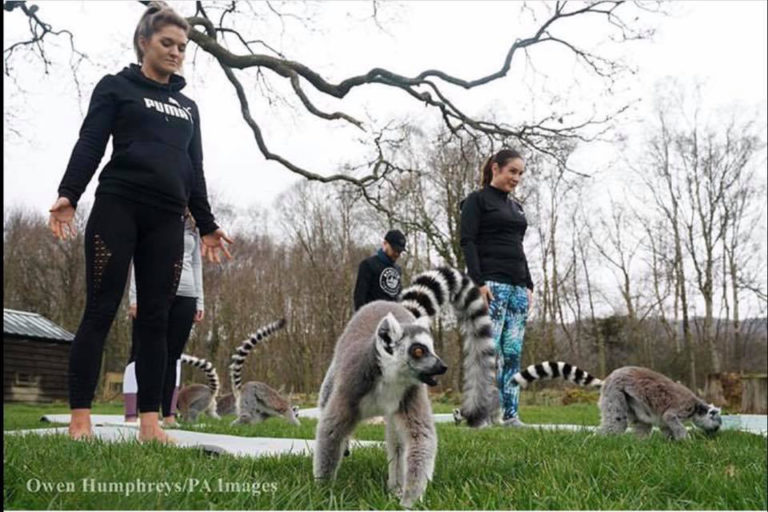An English countryside resort is taking its yoga wellness offerings to the next level by incorporating ring-tailed lemurs from a local conservation and wildlife park into its yoga spa packages.
The Armathwaite is a luxury Cumbrian country house and hotel spa retreat in the serene and beautiful Lake District, and recently opted to bring the charming and agile lemurs into their yogic offerings with ‘lemoga’ classes.
Manager Richard Robinson of the Lake District Wildlife Park (Bassenthwaite) thought yoga and lemurs was an excellent pairing, seeing that the lemurs already seem to show off some characteristic poses done in yoga classes. Lemurs love to sun their furry, light bellies, making for great yoga companions.

We’ve heard of dog yoga (yoga with man’s best friend), horse yoga, goat yoga and even…alpaca yoga. These furry and lively lemurs are the next relaxation craze thanks to the wildlife sanctuary next door.

From £495 for a minimum of two yoga and animal lovers per class, you can enjoy the Armathwaite’s Lemoga Spa Break, which works out to just over R9,000 for two people. The classes allow a maximum of four participants.
But before you think this is a bit too steep, this is what the package includes: a full Cumbrian country breakfast, full use of the spa (including one free treatment) and of course the ‘lemoga’ session, with visitors even allowed entry into the adjoining wildlife park to enjoy the other furry friends along with the lemurs.

Photo by Shaun Norton
Facts about lemurs:
– Lemurs (Lemuroidea) are thought to be the world’s oldest living primates, with their first ancestors originating about 70-million years ago.
– The name ‘lemur’ is said to derive from the Latin word for ‘spirits of the night’.
– Lemurs are native to Madagascar, where there are over 100 unique species of the primates, including the most popular ring-tailed lemurs, such as the ones in the Armathwaite and the Bassenthwaite Wildlife Park.
– Lemurs actually have two tongues: a main one for eating, and a smaller one hidden underneath for grooming themselves and other lemurs – showing that they’re truly made for being sociable.
Images by Owen Humphreys/PA via @armathwaite.hall, and Shaun Norton


















